You are probably happy seeing that your e-commerce business is booming and your sales numbers are off the chart, but is that really maximizing your revenue? You will have to find the answer to that before you get the real picture of your sales.
Increasing your sales volume is one thing while increasing your sales efficiency is another. E-commerce key performance indicators (KPIs) like Average Order Value (AOV) are essential to understand this fully.
In terms of an online/e-commerce business, it is a simple metric that indicates the connection with customers across all products and the overall health of the company.
Let’s explore Average Order Value: its meaning, importance, and top strategies to boost it for your e-commerce success.
What Is Average Order Value?
Average order value is a critical e-commerce or online business metric that measures the average amount spent every time a customer places an order on a website or app.
For instance, let’s say your e-commerce store sold $20000 worth of items with a total of 500 orders placed by the customers over a month; in this case, your Average Order Value for that month will be 20000/500 = $40
Average Order Value (AOV) calculation formula:

More often than not, most businesses calculate this metric every month, i.e., total revenue generated in the month divided by the number of placed orders in that month. It can also be measured weekly or daily in the same way.
Average Order Value By Industry
As per Oberlo’s report, the average order values for some of the major industries as of June 2024 are :
- Luxury and Jewelry: $391
- Home and Furniture: $351
- Consumer Goods: $218
- Fashion, Accessories, and Apparel: $120
- Food and Beverage: $110
The Importance of Average Order Value for E-Commerce Success
Let’s stress briefly how crucial Average Order Value (AOV) is to your e-commerce success. It’s not just another buzzword – it’s the secret sauce that can transform your online store from a side hustle into a thriving empire. Let us break it down for you.
- Sustainable Revenue Growth: First off, let’s talk about money. Boosting your AOV is like giving your revenue a turbo boost without breaking a sweat on extra marketing. It’s the smart way to grow – more bang for your buck with every sale.
- Understanding Customer Behavior Insights: But it’s not just about the revenue numbers. AOV is your crystal ball into customer behaviour as well. It’s like having a heart-to-heart with each shopper, understanding what makes them tick (and buy). This insight? It is pure gold for crafting irresistible marketing strategies and product recommendations.
- Effective Pricing Strategy: Now, pricing strategy – that’s where AOV really shines. It’s your compass for navigating the tricky waters of BOGO deals, discounts, promotions, and bundles. Get this right, and you’ll have customers happily filling their carts to the brim.
- Improved Marketing ROI: We can’t forget about marketing ROI. A higher AOV means each customer you bring in is worth more. It’s like turning your marketing budget into a magic wand that brings in not just more customers but more valuable ones.
- Enhanced Customer Lifetime Value (CLV): Speaking of value, AOV is your ticket to building lasting relationships with customers. Higher AOV often translates to higher customer lifetime value – the holy grail of e-commerce.
- Better Inventory Management: Wondering about your inventory management? AOV’s got your back there too. It encourages bulk purchases, helping you clear stock faster than a Black Friday sale.
- Competitive Advantage: Lastly, mastering AOV gives you the upper hand over your competitors. You’ll be the one offering deals that make customers do a double-take – in a good way.
How Increasing AOV Can Boost Your Business Revenue
You may wonder how increasing Average Order Value (AOV) really makes your wallet sing. Or is it a critical lever for boosting revenue and profitability?
Imagine this: more money rolling in without breaking a sweat to attract new customers. Sounds dreamy, right? That truly is the magic of increasing your AOV. It’s like growing earnings without expanding your customer base or cranking up those pesky overhead costs.
Let’s examine the key ways a higher AOV can transform your e-commerce business and revenue growth:
- Maximizing that Customer Spend: So it’s like turning every shopper into a VIP. When they spend more per visit, your revenue skyrockets. Even tiny bumps in AOV can snowball into jaw-dropping gains over time.
- Leveraging The BOGO & Bundle Offers: Who doesn’t love a good deal? By offering irresistible BOGO offers or bundle deals, you can see how customers load up their carts like it’s Black Friday every day.
- Slashing Those Marketing Costs: Finding new customers is more pricey than you think. But when your existing customers spend more, you’re squeezing more juice from the same oranges. So, there’s no need to break the bank on flashy marketing or customer acquisition campaigns.
- Fattening up Those Profit Margins: Bigger orders often mean juicier profits. Think about it – shipping two items doesn’t cost double, right? That’s extra cash in your pocket due to economies of scale in packaging, shipping & handling.
- Bettering Those Inventory Turnover: Higher AOV means stock flies off your virtual shelves faster than hotcakes. You can say goodbye to your dusty inventory and hello to fresh, in-demand products.
- Improving Those Cash Flow Dynamics: More cash flowing in means more opportunities to reinvest in your business. Whether it’s some cooler products, slicker marketing, or operational upgrades, you’ll have the cash to make it happen.
Top Strategies to Increase Average Order Value
In the e-commerce game, it’s not just about getting more customers through the door. It’s about making each visit count.
Let’s shed light on some popular and proven strategies, along with their best practices, that effectively increase average order value.
Incentivize Customers with BOGO Offers
Buy One Get One (BOGO) offers are probably the most effective and popular method for e-commerce sites to increase their AOV. This promotion also includes presenting offers like Buy X Get X, Buy X Get Y, Buy One Get a certain % OFF, and more similar deals to the shoppers.
By offering an additional item at no extra cost, you’re not just increasing sales – you’re expanding your customers’ horizons. Imagine a shopper who came for a single shirt in your online store but left with a matching accessory they hadn’t even considered.
BOGO strategy doesn’t just boost your Average Order Value; it introduces customers to new product lines, potentially creating long-term brand loyalty.
Pair relevant products with your e-commerce store’s popular items in a BOGO offer, and watch how customers snap up both, clearing your shelves while still maintaining healthy revenue. For example, an online bookstore could offer a bestseller with a lesser-known title from the same author, introducing readers to new works while moving varied inventory.
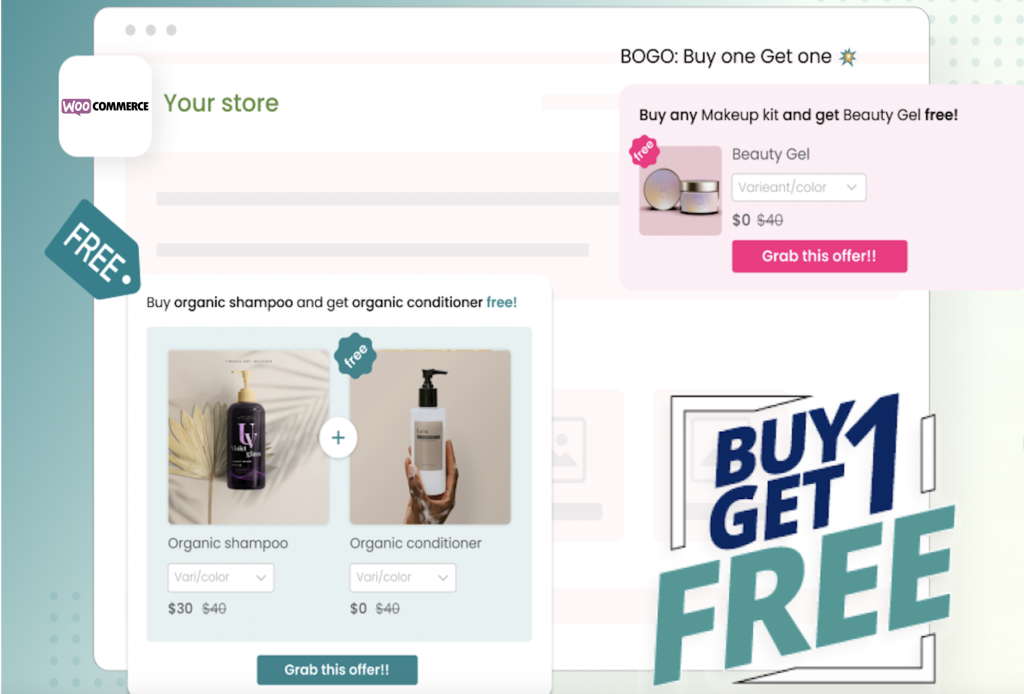
Another advantage of BOGO deals is motivating customers to make bulk purchases. For example, a customer who came to buy one pair of shoes might end up purchasing two pairs to benefit from the BOGO offer, effectively doubling the sale.
Combining BOGO with an urgency / time-limited offer can create wonders. The urgency compels customers to make quicker purchasing decisions to avoid missing out on the deal. This immediacy not only boosts current sales but can also smooth out revenue peaks and troughs.
Most importantly, BOGO deals make customers feel like winners. The thrill of getting something extra enhances the entire shopping experience, leaving a positive impression that lingers long after the purchase. This satisfaction can translate into repeat business and word-of-mouth recommendations.
Best Practices of BOGO Offers and Promotions include:
| ✅ Advertising the BOGO deal clearly on your homepage, product pages, and during checkout. |
| ✅ Offering BOGO on slow-moving inventory to clear stock while boosting sales. |
| ✅ Creating a sense of urgency by making the BOGO deal time-sensitive and using countdown timers to highlight how much time is left for the deal. |
| ✅ Advertising the BOGO deal through email marketing, social media, and paid ads and ensuring consistent messaging across all platforms. |
| ✅ Showing customers how much they’re saving with the BOGO deal both in terms of percentage and actual dollar amount. |
| ✅ Tracking key metrics, such as AOV, conversion rates, and customer feedback, to gauge the success of your BOGO promotion. |
| ✅ Following up with customers who took advantage of the BOGO offer with personalized thank-you emails or additional special offers to encourage repeat purchases. |
Execute Effective Upselling and Cross-Selling Tactics
With upselling, encouraging customers to consider premium versions or upgrades enhances their initial purchases. For instance, a salesperson might suggest a high-end DSLR camera instead of an older model from last year to the customer looking for a good camera.
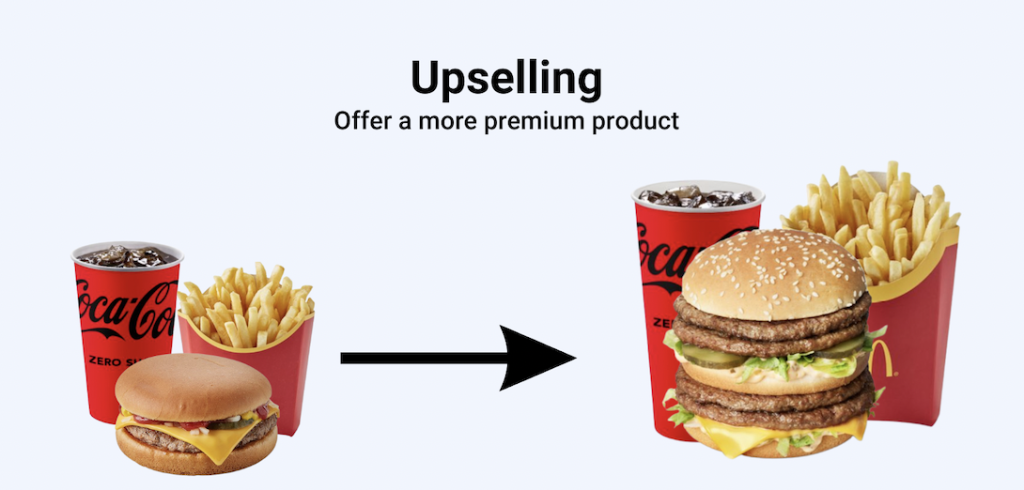
These upselling techniques of focusing on promoting higher-margin items increase profitability per transaction. Another example is that a coffee shop might encourage customers to upgrade to a specialty blend or a larger size, significantly boosting the profit on each sale.
Cross-selling on the other hand is introducing the users to other relevant products which might help the customer have a overall better experience.
Customers who find value in complementary or recommended products are more likely to return. For example, a bookstore that suggests a series based on its customers’ initial purchase may see more recurring customers.
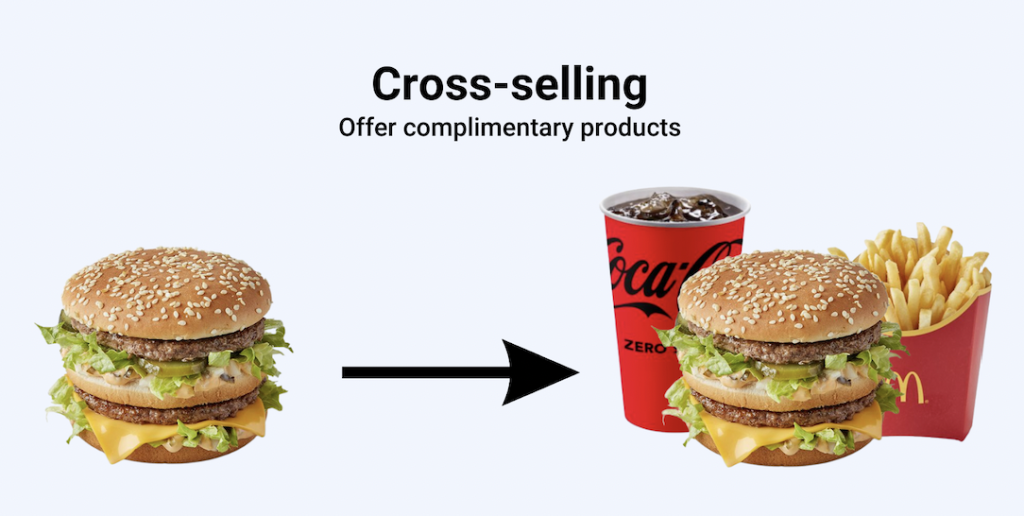
Also, by effectively using the cross-selling technique, you can move slower inventory by pairing it with popular items, optimizing stock levels, and reducing excess costs. For instance, if you have an online kitchenware store, you might consider bundling a slow-moving specialty tool with your best-selling cookware set.
Analyzing customer behaviour related to these upselling/cross-selling strategies provides valuable insights that can inform future marketing efforts and product development. Make sure to pay attention to successful combinations and understand why they work.
Best Practices of Upselling/Cross-selling include:
| ✅ Using customer data and browsing history to suggest relevant products and implement AI-driven recommendation engines to provide tailored suggestions. |
| ✅ Displaying related or complementary products on product pages, cart pages, and during checkout, using phrases like “Frequently Bought Together” or “Customers Also Bought.” |
| ✅ Showcasing highly-rated items as upsell or cross-sell options and using customer testimonials to build trust in the recommended products. |
| ✅ Highlighting upsell and cross-sell items with badges like “Best Seller,” “Popular Choice,” or “Limited Edition.” |
| ✅ Ensuring that upselling and cross-selling prompts are mobile-friendly and seamlessly integrated into the shopping experience on smaller screens. |
| ✅ Suggesting additional products after checkout that complement their purchase via confirmation emails or thank-you pages. |
| ✅ Segmenting your customers based on past purchases, preferences, and behaviour to effectively tailor your upselling and cross-selling strategies. |
Set Free Shipping Thresholds
Setting a minimum purchase amount for free shipping motivates customers to add extra items to their cart. For example, a customer planning to spend $40 might add a $15 item to reach a $50 free shipping threshold, significantly increasing their order value.
This strategy also helps reduce cart abandonment rates. High shipping costs are a common reason for customers to abandon their carts. By offering free shipping at a certain level, you remove this barrier. An online clothing retailer might see fewer abandoned carts when offering free shipping on orders over $100.
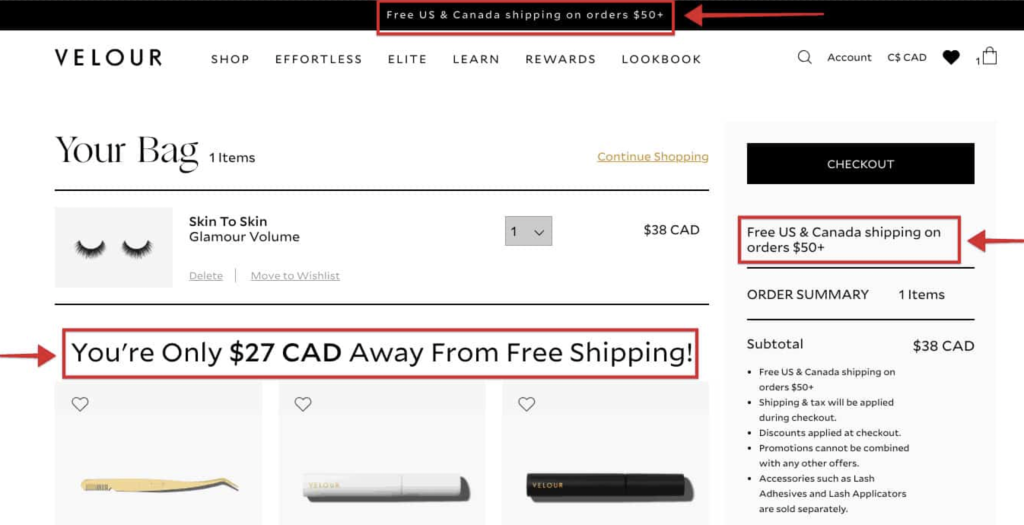
Consumers highly value free shipping, which enhances their satisfaction and potentially boosts loyalty. Customers who enjoy free shipping on their first purchase are more likely to return, knowing they can benefit from this perk again. This can be particularly effective for businesses with repeat purchase potential, like pet supply stores or beauty retailers.
Implementing free shipping thresholds can give you a competitive edge. In a market where competitors charge for shipping, offering free delivery above a certain amount can attract price-sensitive customers. This strategy can be especially effective during peak shopping seasons or holidays.
Best Practices of Free Shipping Thresholds include:
| ✅ Analyzing your average order value and customer purchasing behaviour to determine an attainable threshold that encourages additional spending without alienating budget-conscious shoppers. |
| ✅ Using prominent banners on your website, product pages, and during checkout to communicate the free shipping threshold effectively. |
| ✅ Highlighting free shipping offers in email campaigns, social media posts, and advertisements to drive traffic and increase sales. |
| ✅ Experimenting with various thresholds through A/B testing to find the optimal amount that maximizes AOV while maintaining profitability. |
| ✅ Creating urgency by offering temporary free shipping promotions or lower thresholds during special events or holidays to boost sales quickly. |
| ✅ Encouraging customers to buy complementary products by suggesting bundles or in bulk that meet the free shipping requirement. |
| ✅ Providing exclusive access to free shipping as an incentive for sign-ups or membership renewals for subscription services or loyalty programs. |
Provide Volume Discounts on Bulk Purchases
Offering price breaks on larger purchases encourages customers to buy more items to reach discount thresholds. For instance, a beauty retailer might offer 10% off orders over $100, motivating customers to add extra products to their cart to qualify for the savings.
This approach not only increases immediate sales but also fosters customer loyalty. Shoppers who benefit from volume discounts are likely to return, knowing they can save money on future bulk purchases.
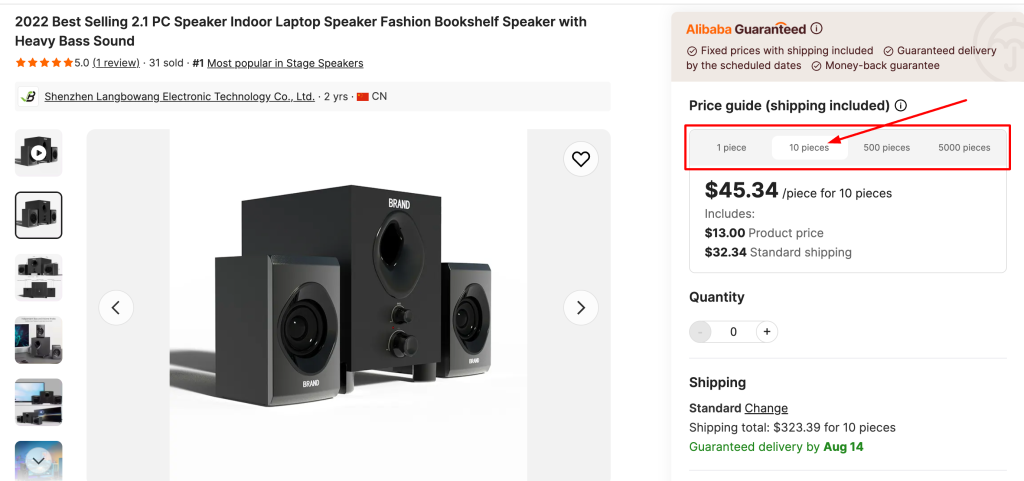
Not only that, implementing volume discounts can give you a clear edge over competitors. In a market where pricing is often similar, offering discounts on larger orders can attract price-sensitive customers and differentiate your brand.
These types of discounts are especially attractive to B2B customers who often require bulk purchasing. By tailoring your discount structure to accommodate larger orders, you can tap into lucrative business-to-business opportunities.
Moreover, these discounts can push hesitant customers over the buying threshold. Someone considering a large purchase but concerned about the cost might be persuaded by the potential savings of a volume discount.
Best Practices of Volume Discounts include:
| ✅ Creating clear and easy-to-understand discount tiers (e.g., 10% off for 5 items, 15% off for 10 items) so customers know how much they can save with larger purchases. |
| ✅ Using banners on your website, product pages, and marketing emails to highlight volume discount offers prominently. |
| ✅ Determining minimum order quantities that encourage bulk buying without alienating smaller customers; avoid thresholds that are too high or unattainable. |
| ✅ Implementing dynamic pricing strategies that automatically adjust prices based on customer selections or cart contents to streamline the purchasing process. |
| ✅ Analyzing sales data and customer feedback related to volume discounts regularly to assess effectiveness and make necessary adjustments. |
| ✅ Considering volume discounts integration with other promotions like free shipping thresholds or seasonal sales for added value and appeal. |
| ✅ Providing clear information on how much they can save by purchasing in bulk through calculators or comparison charts directly on product pages. |
Offer Bundled Deals on Complementary Items
Product bundled deals are a savvy strategy to boost your Average Order Value (AOV) while enhancing the customer experience. By offering complementary items together at an attractive price point, you encourage customers to spend more than they initially planned. For example, a camera store might bundle a popular DSLR with a lens, memory card, and camera bag, enticing photography enthusiasts to make a larger purchase.
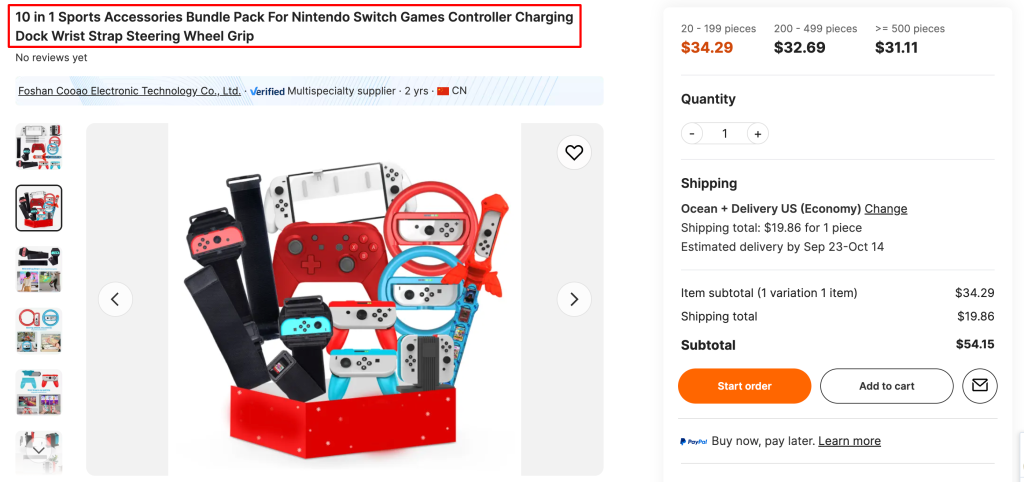
This approach not only increases sales but also simplifies the shopping process for customers. By curating complementary products, you take the guesswork out of decision-making, providing a convenient one-stop solution. A skincare brand could offer a complete routine bundle, saving customers the effort of selecting individual products for cleansing, toning, and moisturizing.
Customers often perceive bundles as offering better value compared to buying items separately. This perception of savings enhances satisfaction and can lead to increased loyalty. For example, a home goods store could create a “New Home Essentials” bundle, offering a perceived discount on a curated selection of household items.
Product bundles are also an excellent way to introduce customers to new or lesser-known products. By including these items in attractive packages, you increase their visibility and appeal. For example, a gourmet food shop might include a unique spice blend in a popular cooking essentials bundle, encouraging culinary exploration. In the case of digital products, companies can bundle their popular products or services with complimentary or unknown solutions.
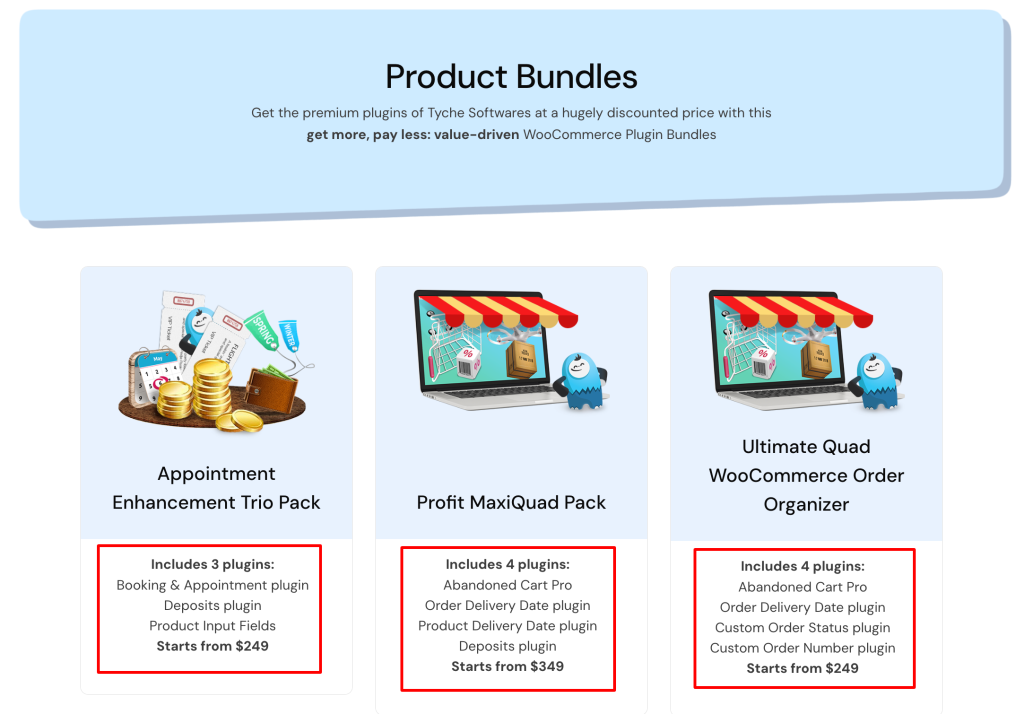
Best Practices of Product Bundling include:
| ✅ Ensuring that bundled products are complementary and make sense together (e.g., a camera with a lens and memory card), enhancing the perceived value. |
| ✅ Providing a clear discount when purchasing bundles versus individual items to incentivize customers to choose the bundle option. |
| ✅ Highlighting bundles with eye-catching images and compelling descriptions that emphasize benefits, making them visually appealing on product pages. |
| ✅ Advertising bundles through email marketing, social media, and website banners to reach a wider audience and increase visibility. |
| ✅ Using sales data to identify which products sell well together and adjust bundling strategies based on customer preferences and buying patterns. |
| ✅ Experimenting with various bundle combinations and pricing strategies to find what resonates best with your target audience through A/B testing. |
| ✅ Creating urgency by offering limited-time bundles or seasonal promotions that encourage quick purchases before the offer expires. |
Case Studies: Brands That Successfully Increased AOV and Overall Revenue
Over the past decade, most popular brands in the e-commerce industry have implemented different sales strategies to increase their Average Order Value.
Here are a couple of them: those who have successfully implemented effective strategies like BOGO promotions, product bundling, upselling/cross-selling, etc., to boost their AOV.
Pizza Hut
Pizza Hut, a global pizza chain known for its diverse menu and innovative offerings, frequently uses various BOGO promotional strategies to boost sales and customer engagement.
Strategies Applied
- BOGO Pizza Deals: It often ran “Buy One Get One Free” or “Buy One Get One 50% Off” promotions on their pizzas. These deals are typically available through online orders and mobile apps, encouraging digital engagement.

- Limited-Time Offers: They even capitalized on major events like the Super Bowl, holidays, or back-to-school season with time-limited BOGO deals to drive urgency and increase order frequency.
- Personalized Marketing: Leveraging customer data, it sends customised emails and app notifications to promote BOGO deals based on its customer’s past purchase behaviour.
With unique data-driven journeys and other promotional strategies like BOGO, Pizza Hut drove customer loyalty and increased AOV. Its conversion has increased threefold from real-time behavioural abandoned cart email reminders. Signups to Pizza Hut’s loyalty program increased by 195%, while engagement from its post-purchase loyalty campaign has seen a 34% jump.
Old Navy
Old Navy, a subsidiary of Gap Inc., is a well-known American clothing and accessories retailer. The brand targets value-conscious consumers with trendy yet affordable apparel for all ages.
Strategies Applied
- Seasonal Promotions: It has often strategically implemented BOGO promotions during peak shopping periods such as back-to-school season, Black Friday, and holiday sales. For example, it offered “Buy One Get One Free” on jeans, kids’ uniforms, or activewear.
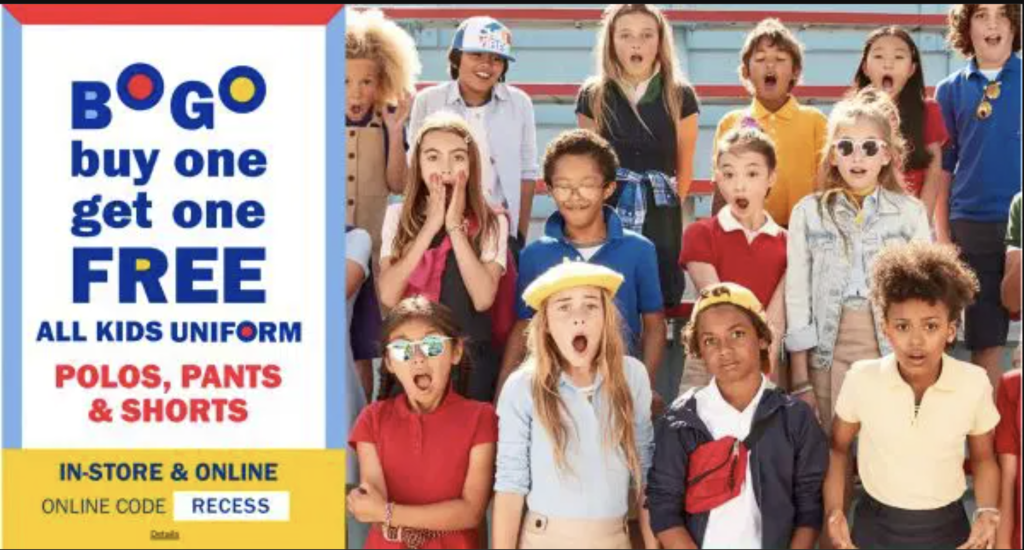
- Product Bundling: They bundled complementary items like matching family pajamas or workout sets to encourage customers to purchase more items in one transaction.
- Cross-Selling Tactics: Promoted related products that qualify for BOGO deals in-store displays and in website suggestions.
| Recommended Reading: Top 5 Marketing Automation Plugins to Boost Your Sales in 2024 |
Why Average Order Value Matters More Than You Think
Well, the reasons are simple: AOV is crucial for e-commerce success, driving financial growth, operational efficiencies, strategic decision-making, improved marketing, enhanced customer experience, and competitive advantage. It provides key metrics to measure customer value, evaluate marketing efforts, and assess pricing strategies.
Moreover, understanding customer behaviour also enables you to set new targets and strategies, including analyzing the performance of the strategies already implemented.
While many marketers focus on driving traffic, increasing AOV through strategies like BOGO offers can be more impactful and profitable. Unlike bringing in traffic, which typically incurs costs, increasing AOV doesn’t. Every order has associated transaction costs, so boosting AOV directly increases revenue and profitability from existing customers.
This approach leverages customers already purchasing from your e-store, making it a cost-effective way to grow your business.
Final Words
Now you know increasing and tracking your AOV KPI is not just a nice-to-have; it’s a critical component for achieving sustained e-commerce business success.
But make sure to carefully implement these effective strategies following the best practices of upselling and cross-selling, setting free shipping thresholds, offering volume discounts, bundled deals and leveraging BOGO (Buy One Get One) promotions discussed here.
Also, remember that each strategy should be tailored to fit your unique customer base and product offerings. Once you can ensure that, you will be on your way to encourage your customers to spend more per transaction while also enhancing their shopping experience.
So take action today—analyze your current metrics, experiment with these effective strategies, and watch as your average order value climbs steadily upwards.



